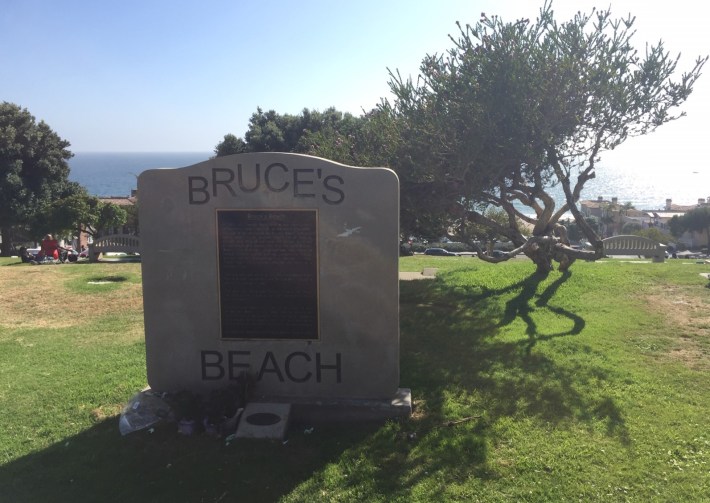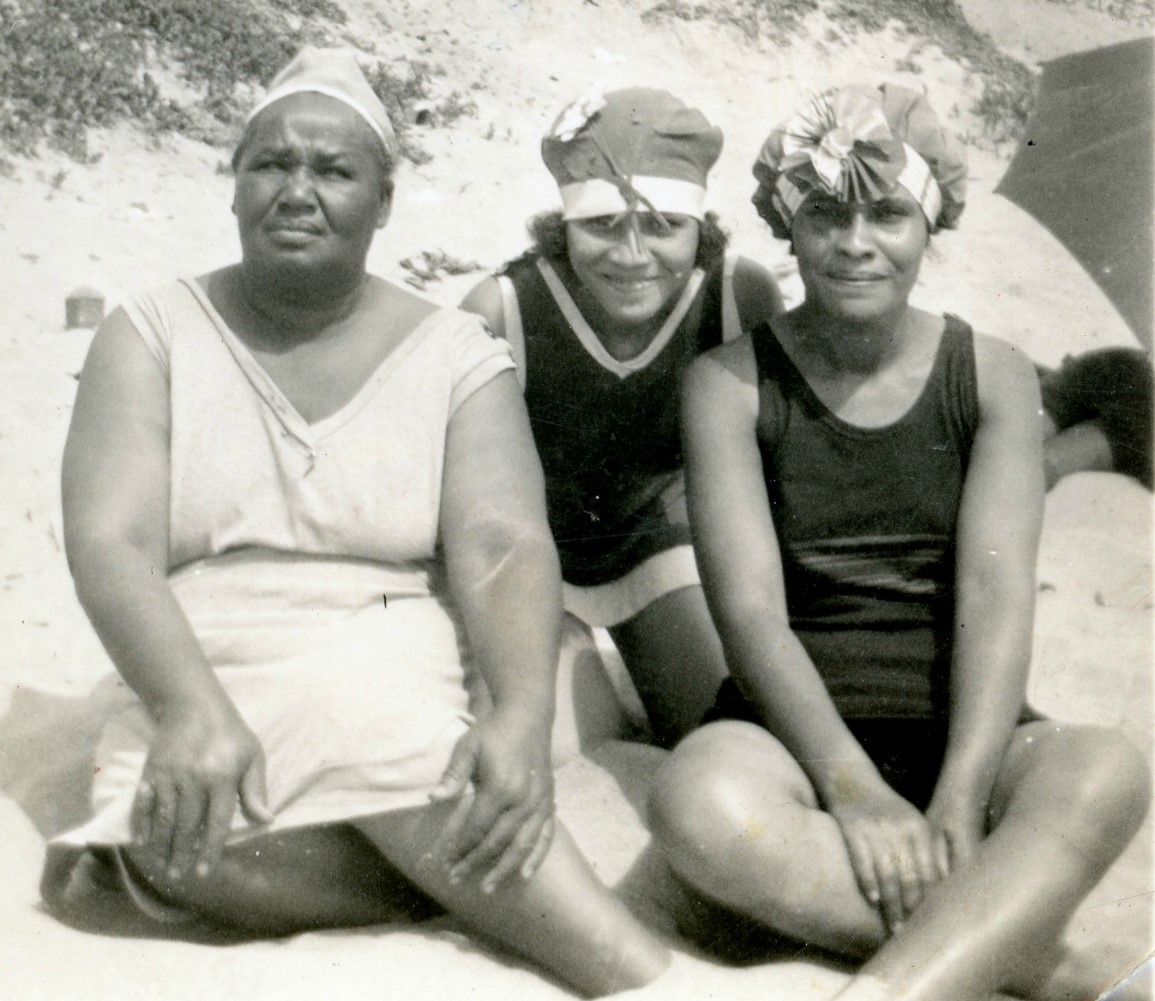"I hope that the media will use the right word when you report this story today. The county isn't gifting anyone anything. The county is returning property that was inappropriately taken. We are returning to the Bruce family... property that they rightfully owned."
These were the words of L.A. County Supervisor Holly Mitchell at this morning's press event to announce the county's plans to return Bruce's Beach property to the descendants of its rightful owners: Willa and Charles Bruce, the Black entrepreneurs that first purchased the property and built a resort to serve Black families. As Mitchell stated, the city of Manhattan Beach "used the law to steal" Bruce's Beach in the 1920s.
This morning, L.A. County Supervisor Janice Hahn hosted the press event alongside Mitchell, State Senator Steve Bradford, State Assemblymember Al Muratsuchi, L.A. County Fire Department Chief Daryl Osby, former Manhattan Beach Mayor Mitch Ward, Justice for Bruce’s Beach Founder Kavon Ward, and Bruce family representative Chief Duane Yellow Feather Shephard. Readers interested in this story should watch the full video of the event, which lives up to Hahn's characterization as "the best press conference you have ever been to."
Hahn opened the event by describing how the Bruces' dream had been undercut by their white neighbors at every turn. In brief, the Bruces purchased the beachfront site in 1912 and established Bruce’s Beach as a popular destination for Black Angelenos, who were denied access to most Southern California beaches. Their white neighbors immediately "staked off the strand right - here in front of the lodge - with 'No Trespassing' signs and forced the people to walk a mile and half from [Bruce's] resort just to get to the ocean," per Hahn. In 1924, the city of Manhattan Beach voted to seize the site via eminent domain, ostensibly to build a park. The city finally took the property outright in 1929, paying the Bruces only a fraction of what they had asked for. The Bruces were also prohibited from buying beachfront property elsewhere, meaning they were unable to resurrect their project. Meanwhile the park for which the land was deemed so essential was not built until the 1960s.
Stripping the Bruces of such a valuable asset, Hahn acknowledged, likely deprived their descendants of millions.
It had also been part of the larger history of the exclusion of Black people from spaces like beaches long after the Bruces' property was seized. Fire Chief Osby, for example, related the story told to him by his grandmother, whose family had had to drive from San Diego to Manhattan Beach because Black people were not allowed on beaches in San Diego or Orange County.
Mitchell noted that the Bruces' story also spoke to "How many of us never imagined that Black people were property owners 100 years ago. Or that a young Black couple had the vision and desire to own beachfront property 100 years ago. Please know that that story doesn't start or end with the Bruces."
Mitchell also invoked the pain inflicted upon the Bruces and the patrons they served, asking listeners to imagine "the kind of hatred, and I would argue fear, that would compel a group of people to stop another group of people from ...enjoying mother nature, the sand, or the ocean."
"If I were standing next to you in the ocean, my Blackness wouldn't impact you," she continued. "So what would compel a group of to suggest it appropriate that another group of people have to walk a mile and a half to enter something that none of us own...," or to leverage, fear, hatred, violence, and the law to steal property from its rightful owners?
Tracing that early theft on up to the present, she then pointed to how much Black families continued to lag behind their white counterparts in homeownership. As a new supervisor, she said, she was already working on preserving and expanding property ownership opportunities for communities of color, but that this was "only the beginning of a long journey to much needed economic justice."
Under pressure from civil rights activism, in 2007, Manhattan Beach renamed the park, acknowledging its historical name, Bruce's Beach. A more recent push for justice, led by the Justice for Bruce's Beach campaign, resulted in the city of Manhattan Beach forming a Bruce's Beach Task Force that, this week, resulted in a tepid "acknowledgement and condemnation" of the city's wrongs, but no apology.
"When I realized that the county of Los Angeles now had ownership of the Bruces' original property, I wanted to do what I could to start righting this wrong. I felt there was nothing else to do but give the property back to the descendants of Willa and Charles Bruce," stated Hahn. "That is what I am announcing today: that it is the county's intention to return this property."
"I learned very quickly that I just can't give the property back... When the county got the property from the state of California, it came with restrictions [that] limited our ability to sell or transfer this property," Hahn continued, "so I need... state legislation to lift the restrictions and allow the county to transfer this property."
Senator Bradford announced new legislation, S.B. 796, which would exempt the Bruce’s Beach property from these restrictions and enable the county to return the site to its rightful owners. The legislation is co-authored by Senator Ben Allen and Assemblymember Muratsuchi.
Hahn and Mitchell also plan to introduce a motion at the Board of Supervisors' April 20 meeting regarding next steps for returning the property.
Bradford stated, "I hope that the action we take today will serve as a turning point in California's history and will be remembered as the beginning of a long journey toward restitution for descendants of slaves and all of Black California." Bradford and Mitchell both noted that returning the Bruce's Beach property could serve as a precedent for broader reparations.
Shephard called for "restoration of our land [and] restitution for the loss of enterprise, and punitive damages for the collusion of the institutional racism in this city that railroaded our family out of here."
"As I play my part in this movement, my ancestors they travel with me as I chant 'justice for Bruce's Beach!'," exclaimed Justice for Bruce’s Beach founder Kavon Ward. "Now is the time for reckoning. Reparative justice is what we seek. Apologize. Make amends. Pay restitutions to the Bruce family."

Keep up with Bruce's Beach developments by following Justice for Bruce's Beach via the group's website, Facebook and Instagram.







